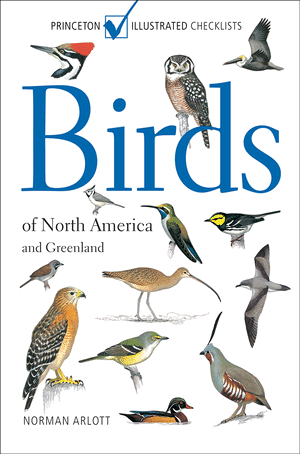...and Greenland? Seriously?! Hmmm...interesting.
My perspective on Greenland has been long tainted. My middle school geography teacher taught that Iceland and Greenland really should swap names. And even more terrible is the profound mal-impression of Greenland on my young fertile mind from Vizzini rebuking Fezzik with these words: "And YOU: friendless, brainless, helpless, hopeless! Do you want me to send you back to where you were? Unemployed, in Greenland?" You get bonus points if you can name that movie in the comments!
I am a huge fan of Princeton's Illustrated Checklist series. Up until now this series seems to have been dedicated to some far-flung places that do not yet have the quality of field guides that we enjoy in North America. So, I was surprised that this volume featuring North America came out...with the addition of Greenland.
Advantages: Covers 900 species including dozens and dozens of vagrants from Europe, Asia, and Central America in a pocket-sized guide. That is an amazing feat in and of itself! The illustrations on 102 plates are really attractive and hearken back to old school field guides which used specimen skins to guide them - see the red-crown on the Western Kingbird for example. You don't see that in modern field guides any more. This little guide book is sufficient for most of your field identification needs. Even though this book is compact, thumbnail range maps are still included for most species.
Disadvantages: The taxonomy and naming are already out of date in this fast-changing birding world, but not enough to bug most of us birders. Subspecies names shown are scientific form only. Though I live near the Great Salt Lake and appreciate it being recognized, it just doesn't look right being shown on the range maps...it looks more like a errant range is trying to be indicated. Its okay to leave the Great Salt Lake off maps this tiny. The maps are also hard to read as they are so close to the edge of the page toward the binding. (After I wrote this and scheduled it to post, Rick Wright reviewed it on the ABA Blog and points out an abundance of errors. He also mentions how this field checklist was not written for a North American audience...which makes a lot more sense of everything, including the addition of Greenland.)
I do perfer Norman Arlott's illustration quality to Ber van Perlo's. These two are the principal writers and illustrators of all the Princeton Illustrated Checklists. This really is the prefect type of field guide to use when you need to minimize luggage while traveling or to have in the car.
If you are looking for the birds of Greenland in this book...you'll want to look mostly in the sea-faring and tundra breeding bird sections. This book did prompt me to learn a bit more about Greenland. Did you know that Greenland is an autonomous county, but still tied to the Kingdom of Denmark? The population is just over fifty thousand and is mostly Inuit (88%) and Danes (12%). The main industry is fishing and there is some mining. Most towns in Greenland are not connected by roads due to all the fjords along the coast. Most of the population speaks both Greenlandic and Danish, and many also speak English as a third language. (Wikipedia) There are some Greenland cruises and nature tours, though I didn't see any specifically focused on birding. Greenland is still one of those vast wildernesses that would be fascinating to explore. I did find one BirdingPal in Greenland who relates that it is a good place in the right season to see Gyrfalcon!
List price is $15.95 and is available for pre-order for only $10.74 on Amazon.



Nice post and great snippit from Princess Bride :)
ReplyDeleteI reviewed this book also and found it to be a great deal for a convenient, compact reference. The Princess Bride is one of my favorite all time movies! So much so that I use the phrase "as you wish" quite often ;-)
ReplyDeleteGreenland has an interesting history. Jared Diamond wrote about it in "Collapse". The early settlers, the Vikings from Norway, were unable to adjust to the short northern growing cycle and refused to learn from the Inuit who they despised, to survive the winters by hunting seals. So they eventually starved to death proving again that "pride comes before a fall". Anyway, I apologize for digressing.
ReplyDelete